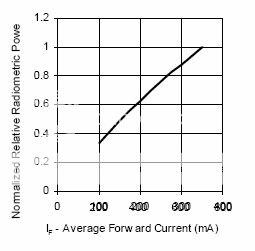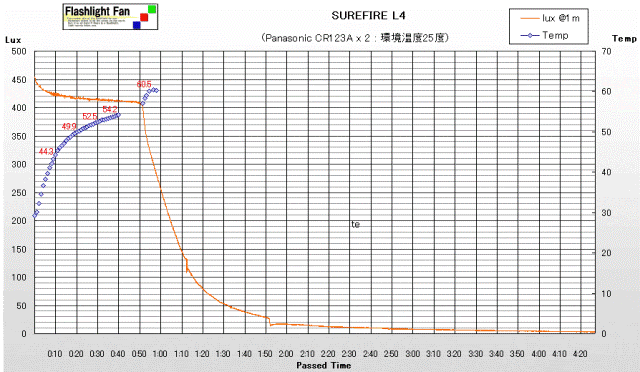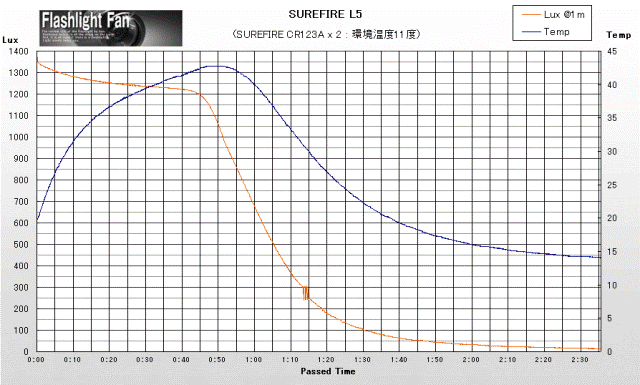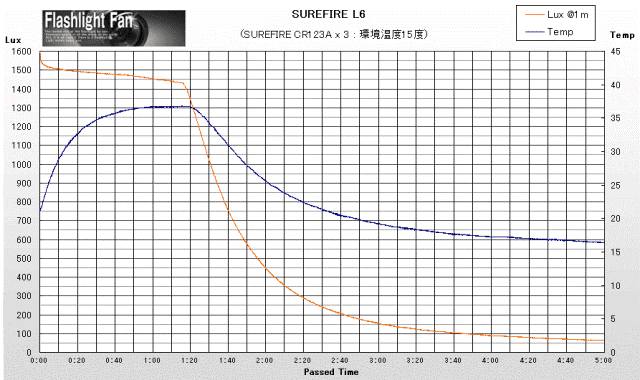[ QUOTE ]
If only a test could be set up to run them for a minute and let them cool for 2 minutes, repeating until they go out of regulation. Then generate a graph, with the cooling periods taken out.
[/ QUOTE ]
I like your thinking, Sir. Everyone is testing a light, using methods that do not emulate it's actual use. I would like to see a consensus of members, writing posts with their idea of what a practical runtime test should entail.
First to be determined, is the "average" period of time that an "average" user has the light turned on. Note that when it is turned off, the battery gets a chance to "rest", and during this time it will recharge itself to a small degree. This phenomenon is why a light that has weak batteries and is turned off and allowed to rest, will be brighter for a few seconds than when it was turned off.
Second to be determined is the real time that a light is turned off between uses. From my readings about lights over the years, I found that if you run a light continuously, clock it until the batteries are dead, and compare this number to the sum of all of the on cycles when the light gets to rest, then the sum of all of these on cycles will exceed the runtime of the light that is left on continuously. This means that it is a good practice to allow a battery to rest. It is also beneficial for any lamp, not only an LED, to not get too hot from continuous use, because this will do irreversible damage and shorten it's lifespan. At all costs, we must prevent our lights from getting overheated. Even a 30 second rest during a long run, can make a difference in the LED's lifespan, when the light's body is getting uncomfortably hot.
If we can standardize a test method to approximate actual use, then we can accurately compare one light with the same number of batteries and lamp wattage, to another one. We can not become smart shoppers, if we are all over the place in how we evaluate our lights.
Does anybody have any idea, how to implement a survey that will yield real world on and off times? I look forward to the start of this project. I hope that many members will participate.
 Help Support Candle Power Flashlight Forum
Help Support Candle Power Flashlight Forum





